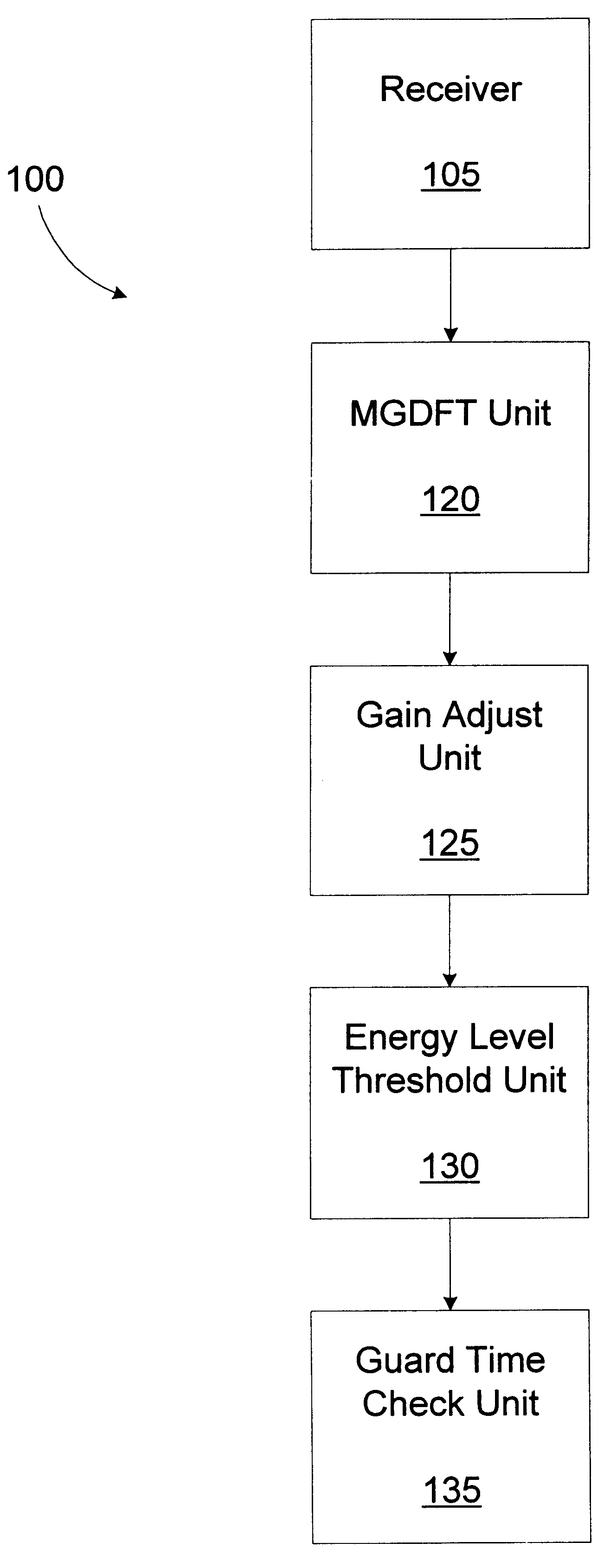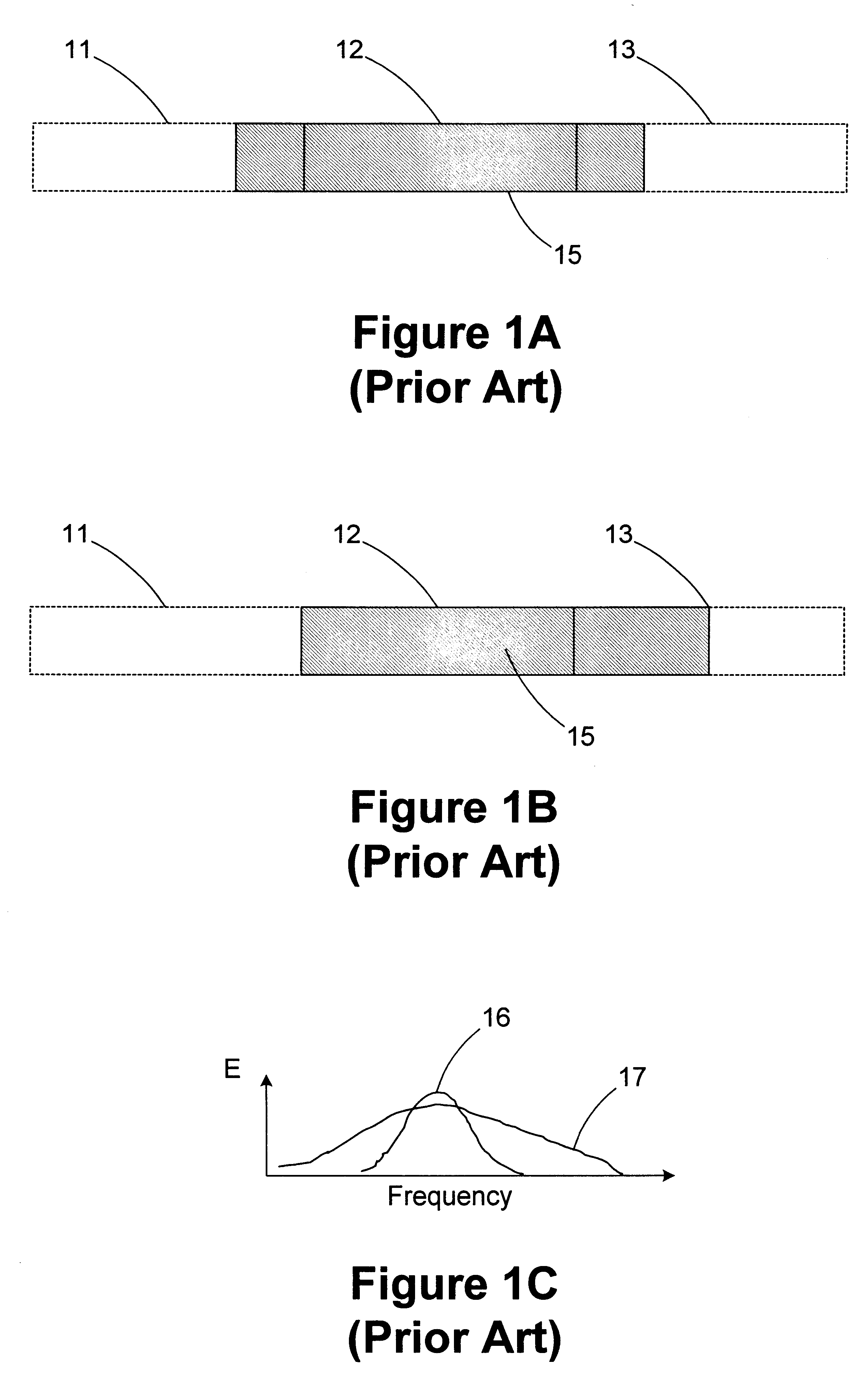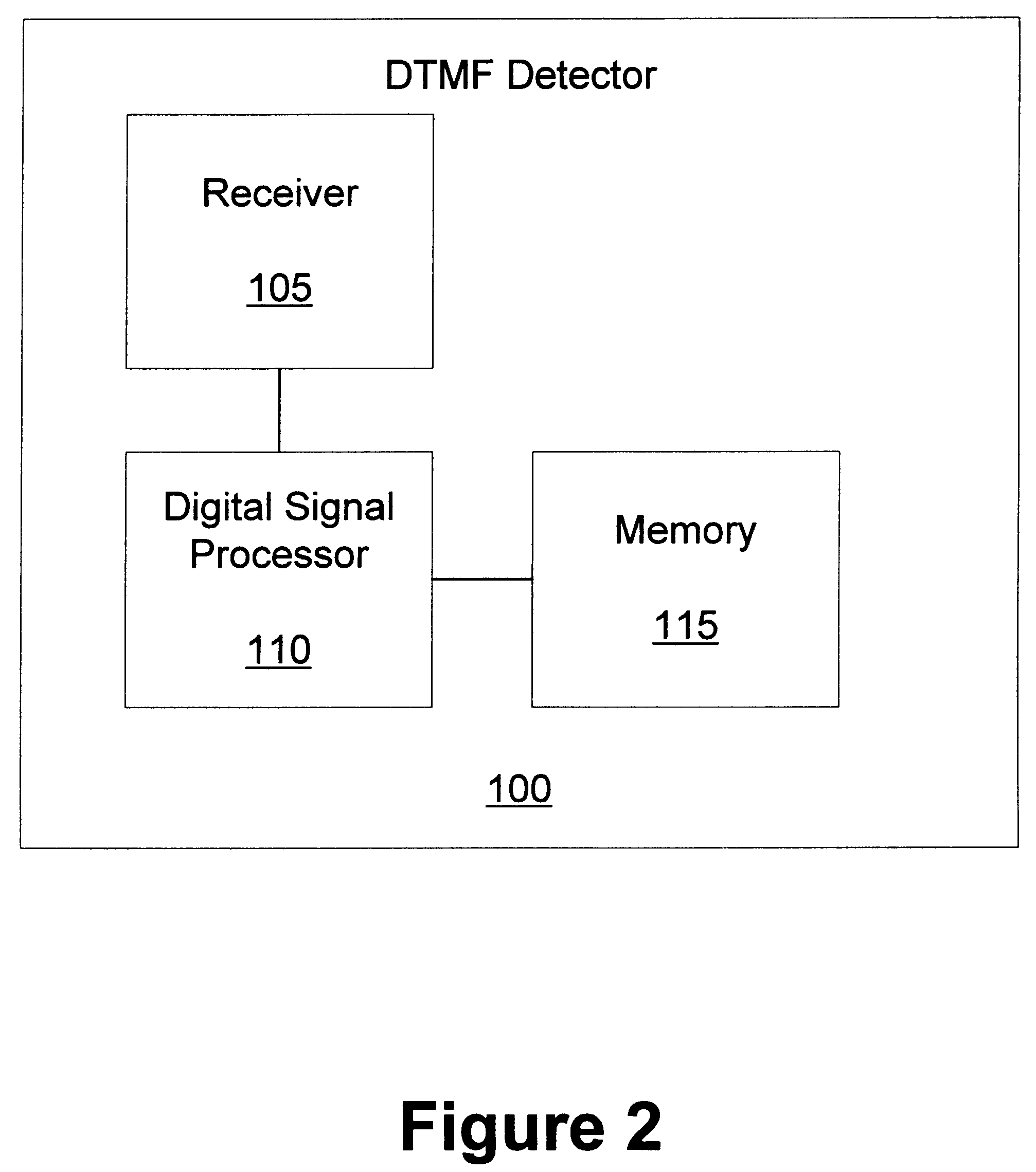Signal detector with matched filter coefficient
a signal detector and filter coefficient technology, applied in the field of detection of dual tone multifrequency (dtmf) coded signals, can solve the problems of asymmetric effect complicating the selection of frequency distortion thresholds, the accuracy of frequency domain outputs is degraded, and the algorithm of the goertzel algorithm is unable to meet the required dtmf frequency distortion tes
- Summary
- Abstract
- Description
- Claims
- Application Information
AI Technical Summary
Problems solved by technology
Method used
Image
Examples
Embodiment Construction
Illustrative embodiments of the invention are described below. In the interest of clarity, not all features of an actual implementation are described in this specification. It will of course be appreciated that in the development of any such actual embodiment, numerous implementation-specific decisions must be made to achieve the developers' specific goals, such as compliance with system-related and business-related constraints, which will vary from one implementation to another. Moreover, it will be appreciated that such a development effort might be complex and time-consuming, but would nevertheless be a routine undertaking for those of ordinary skill in the art having the benefit of this disclosure.
Referring to FIG. 2, a block diagram of a dual tone multifrequency (DTMF) detector 100 is provided. The DTMF detector 100 includes a receiver 105, a digital signal processor 110, and a memory 115. The receiver 105 receives an analog signal and converts the analog signal into digital fo...
PUM
 Login to View More
Login to View More Abstract
Description
Claims
Application Information
 Login to View More
Login to View More - R&D
- Intellectual Property
- Life Sciences
- Materials
- Tech Scout
- Unparalleled Data Quality
- Higher Quality Content
- 60% Fewer Hallucinations
Browse by: Latest US Patents, China's latest patents, Technical Efficacy Thesaurus, Application Domain, Technology Topic, Popular Technical Reports.
© 2025 PatSnap. All rights reserved.Legal|Privacy policy|Modern Slavery Act Transparency Statement|Sitemap|About US| Contact US: help@patsnap.com



